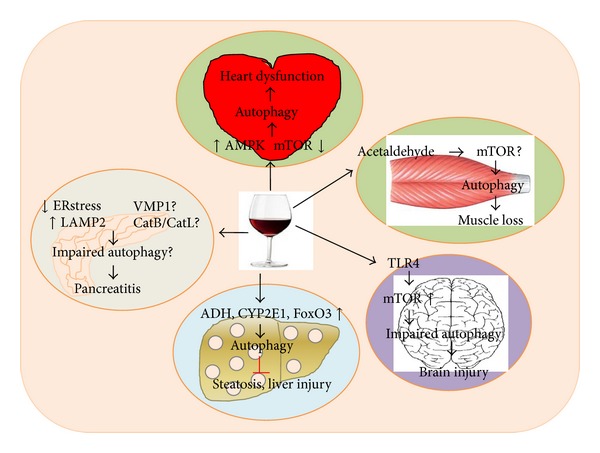Figure 2.

Differential roles of autophagy in alcohol-induced multitissue injury. Emerging evidence now indicates that alcohol consumption can either activate or impair autophagy as either a cellular adaptive/compensatory protective mechanism or as a detrimental factor contributing to alcohol-induced injury in various tissues/organs. In liver, it seems that alcohol metabolism through ADH and Cyp2E1 is required for autophagy activation. Acute alcohol treatment also induces FoxO3-mediated autophagy. Autophagy seems to selectively remove damaged mitochondria and excess lipid droplets and in turn attenuate alcohol-induced steatosis and liver injury. In pancreas, alcohol can induce ER stress and also decrease LAMP2 in the presence of endotoxin LPS, which leads to impaired autophagy resulting in pancreatitis. It is not known whether alcohol consumption would affect VMP1 and the ratio of CatB (cathepsin B)/CatL (cathepsin L), two important factors that regulate autophagy and pancreatitis, respectively. In heart, alcohol may activate autophagy through activating AMPK and inactivating mTOR. Autophagy activation seems to contribute to alcohol-induced heart dysfunction. In muscle, metabolism of alcohol to acetaldehyde activates autophagy resulting in muscle loss. Whether alcohol-induced autophagy in muscle is mediated by mTOR is not clear. In brain, alcohol increases mTOR and impairs autophagy in the mouse cerebral cortex resulting in brain injury, which is TLR4 dependent. Together, it is clear that alcohol can affect the autophagy process and in turn regulate tissue injury in various tissues/organs.
